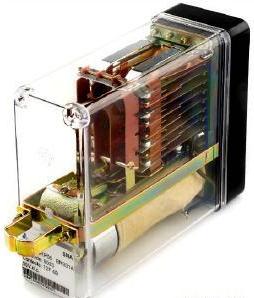Magnetic materials used in the manufacture of electrical devices
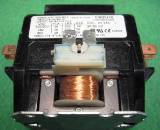 The following ferromagnetic materials are used for the production of magnetic cores in apparatus and instrumentation: technically pure iron, high-quality carbon steel, gray cast iron, electrotechnical silicon steel, iron-nickel alloys, iron-cobalt alloys, etc.
The following ferromagnetic materials are used for the production of magnetic cores in apparatus and instrumentation: technically pure iron, high-quality carbon steel, gray cast iron, electrotechnical silicon steel, iron-nickel alloys, iron-cobalt alloys, etc.
Let's briefly look at some of their properties and application possibilities.
Technically pure iron
For magnetic circuits of relays, electrical meters, electromagnetic connectors, magnetic shields, etc., commercially pure iron is widely used. This material has a very low carbon content (less than 0.1%) and a minimal amount of manganese, silicon and other impurities.
These materials typically include: armco iron, pure swedish iron, electrolytic and carbonyl iron, etc. The quality of pure iron depends on minor proportions of impurities.
The most harmful effects on the magnetic properties of iron are carbon and oxygen.Obtaining chemically pure iron is associated with great technological difficulties and is a complex and expensive process. The technology, specially developed in laboratory conditions with double high-temperature annealing in hydrogen, made it possible to obtain a single crystal of pure iron with extremely high magnetic properties.
Found the greatest spread steel armcoobtained by open method. This material has quite a high content magnetic permeability, significant saturation induction, relatively low cost and at the same time has good mechanical and technological properties.
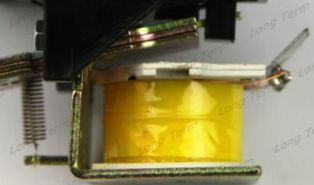
The low electrical resistance of armco steel to the passage of eddy currents, which increases the response and release time of electromagnetic relays and connectors, is considered a major disadvantage. At the same time, when this material is used for electromagnetic time relays, this property, on the contrary, is a positive factor, since it makes it possible to obtain relatively large delays in the operation of the relay by extremely simple means.
The industry produces three types of commercially pure armco-type steel sheet: E, EA and EAA. They differ in the values of maximum magnetic permeability and coercive force.
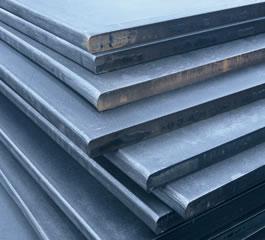
Carbon steels
Carbon steels are produced in the form of rectangular, round and other sections, from which parts of various profiles are also cast.
Gray cast iron
As a rule, gray cast iron is not used for magnetic systems due to its poor magnetic properties. Its use for powerful electromagnets can be justified on economic grounds. It also applies to foundations, boards, posts and other parts.
Cast iron is well cast and easy to work with.Malleable cast iron, specially annealed, as well as some grades of gray alloy cast iron, have quite satisfactory magnetic properties.
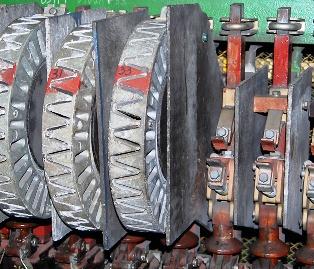
Electrotechnical silicon steels
Thin sheet electrical steel is widely used in electrical and hardware engineering and is used for all kinds of electrical measuring instruments, mechanisms, relays, chokes, ferroresonant stabilizers and other devices operating on normal and increased frequency alternating current. Depending on the technical requirements for steel losses, magnetic characteristics and the applied frequency of alternating current, 28 types of thin sheet are produced with a thickness of 0.1 to 1 mm.
In order to increase the electrical resistance of eddy currents, a different amount of silicon is added to the steel composition, and depending on its content, low-alloy, medium-alloy, high-alloy and high-alloy steels are obtained.
With the introduction of silicon, the losses in the steel decrease, the magnetic permeability in weak and medium fields increases, and the coercive force decreases. Impurities (especially carbon) in this case have a weaker effect, steel aging is reduced (losses in steel change little over time).
The use of silicon steel improves the stability of the operation of electromagnetic mechanisms, increases the response time for actuation and release, and reduces the possibility of armature sticking. At the same time, with the introduction of silicon, the mechanical properties of steel deteriorate.
With a significant silicon content (more than 4.5%), the steel becomes brittle, hard and difficult to machine. Small stamping results in significant rejects and rapid die wear.Increasing the silicon content also decreases the saturation induction. Silicon steels are produced in two types: hot-rolled and cold-rolled.
Cold rolled steels have different magnetic properties depending on the crystallographic directions. They are divided into textured and low-textured. Textured steels have slightly better magnetic properties. Compared to hot-rolled steel, cold-rolled steel has higher magnetic permeability and low losses, but provided that the magnetic flux coincides with the rolling direction of the steel. Otherwise, the magnetic properties of the steel are significantly reduced.
The use of cold-rolled steel for traction electromagnets and other electromagnetic devices operating at relatively high inductances gives considerable savings in n. pp. and losses in steel, which makes it possible to reduce the overall dimensions and weight of the magnetic circuit.
According to GOST, the letters and numbers of individual brands of steel mean: 3 — electric steel, the first number 1, 2, 3 and 4 after the letter indicates the degree of alloying of steel with silicon, namely: (1 — low alloy, 2 — medium alloy, 3 — highly alloyed and 4 — heavily alloyed.
The second number 1, 2 and 3 after the letter indicates the value of losses in steel per 1 kg of weight at a frequency of 50 Hz and magnetic induction B in strong fields, and number 1 characterizes normal specific losses, number 2 — low and 3 — low.The second number 4, 5, 6, 7 and 8 after the letter E indicates: 4 — steel with specific losses at a frequency of 400 Hz and magnetic induction in medium fields, 5 and 6 — steel with magnetic permeability in weak fields from 0.002 to 0.008 a / cm (5 — with normal magnetic permeability, 6 — with increased), 7 and 8 — steel with magnetic permeability in the medium (fields from 0.03 to 10 a / cm (7 — with normal magnetic permeability, 8 — with increased).
The third digit 0 after the letter E indicates that the steel is cold rolled, the third and fourth digits 00 indicate that the steel is cold rolled with low texture.
For example, E3100 steel is a high-alloy cold-rolled low-texture steel with normal specific losses at a frequency of 50 Hz.
The letter A placed after all these numbers denotes particularly low specific losses in the steel.
For current transformers and some types of communication devices whose magnetic circuits operate at very low inductances.
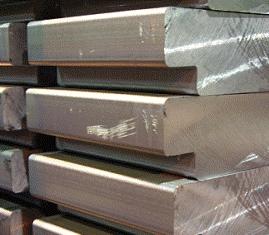
Iron-nickel alloys
These alloys, also known as permaloid, used mainly for the production of communication devices and automation. The characteristic properties of permalloy are: high magnetic permeability, low coercive force, low losses in the steel, and for a number of brands — the presence, in addition, of a rectangular shape hysteresis loops.
Depending on the ratio of iron and nickel, as well as the content of other components, iron-nickel alloys are produced in several grades and have different characteristics.
Iron-nickel alloys are produced in the form of cold-rolled, heat-untreated strips and strips with a thickness of 0.02-2.5 mm in various widths and lengths.Hot-rolled strip, rod and wire are also produced, but these are not standardized.
Of all the permaloid grades, alloys with a nickel content of 45-50% have the highest saturation induction and relatively high electrical resistivity. Therefore, these alloys make it possible with small air gaps to obtain the required pulling force of an electromagnet or relay with low losses. pp. on steel and at the same time provide sufficient performance.
For electromagnetic mechanisms, the residual traction force obtained due to the coercive force of the magnetic material is very important. Using permaloid reduces this strength.
Alloys of grades 79НМ, 80НХС and 79НМА, having very low coercive force, very high magnetic permeability and electrical resistance, can be used for magnetic circuits of highly sensitive electromagnetic, polarized and other relays.
The use of permaloid alloys 80HX and 79HMA for small power chokes with a small air gap makes it possible to obtain very large inductances with small volume and weight magnetic circuits.
For more powerful electromagnets, relays and other electromagnetic devices operating at relatively high N. c, permaloid has no particular advantages over carbon and silicon steels, since the saturation induction is much lower and the cost of the material is higher.
Iron-cobalt alloys
An alloy consisting of 50% cobalt, 48.2% iron and 1.8% vanadium (known as permendur) has received industrial application. With a relatively small n. c. it gives the highest induction of all known magnetic materials.
At weak fields (up to 1 A / cm) the induction of permendur is lower than the induction of hot-rolled electrical steels E41, E48 and especially cold-rolled electrical steels, electrolytic iron and permaloid. The hysteresis and eddy currents of the permendure are relatively large, and the electrical resistance is relatively small. Therefore, this alloy is of interest for the production of electrical equipment operating at high magnetic induction (electromagnets, dynamic loudspeakers, telephone membranes, etc.).
For example, for traction electromagnets and electromagnetic relays, using it with small air gaps gives a certain effect. A given pulling force can be achieved with a smaller magnetic circuit.
This material is produced in the form of cold-rolled sheets with a thickness of 0.2 - 2 mm and rods with a diameter of 8 - 30 mm. A significant disadvantage of iron-cobalt alloys is their high cost, due to the complexity of the technological process and the significant cost of cobalt. In addition to the listed materials, other materials are used in electrical devices, for example iron-nickel-cobalt alloys, which have constant magnetic permeability and very low hysteresis losses in weak fields.

